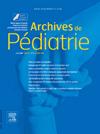新生儿期广泛水解牛奶蛋白的适应症。
IF 1.3
4区 医学
Q3 PEDIATRICS
引用次数: 0
摘要
在新生儿中使用广泛水解牛奶蛋白(CMP)的处方中,有很大一部分并非基于任何科学数据来证明这种适应症的合理性。其中许多处方是旧习惯或基于不完整的数据。本文旨在分析这些做法并提出建议。主要包括以下几点(a) 有研究证明广泛水解配方奶粉在这些情况下的益处的适应症--经证实对 CMP 过敏的新生儿,以及偶尔开具母乳喂养补充剂的处方;(b) 没有高水平证据支持的可能适应症--因坏死性小肠结肠炎、短肠综合征而开始喂养,肠道手术后重新开始喂养新生儿,以及在母亲自身乳汁或乳房乳汁均不可用的情况下进行腹腔手术;(c) 不正当适应症--有过敏风险的新生儿、早产儿、严重神经系统病变的新生儿、血流动力学不稳定和/或患有先天性心脏病的新生儿、接受低体温治疗的新生儿缺氧缺血性脑病,以及患有食道闭锁或膈疝的新生儿。根据这一分类,处方医生将得到指导,使用最适合病理情况的牛奶,同时要牢记每种情况都必须单独调整,并从营养和功能的角度重新评估食物的耐受性和有效性。本文章由计算机程序翻译,如有差异,请以英文原文为准。
Indications for extensively hydrolyzed cow's milk protein in the neonatal period
A large proportion of prescriptions for extensively hydrolyzed cow's milk protein (CMP) in newborns are not based on any scientific data justifying the indication. Many of these prescriptions are old habits or are based on incomplete data. The aim of this article is to analyze these practices and propose recommendations. The following points are covered: (a) indications for extensively hydrolyzed formula based on studies demonstrating their benefits in these situations—newborns with a proven allergy to CMP and occasional prescription of supplements to breastfeeding; (b) possible indications not based on a high level of evidence—re-initiation of feeding due to necrotizing enterocolitis, short bowel syndrome, re-initiation of feeding of newborns following intestinal surgery, and laparoschisis if neither the mother's own milk nor milk from a lactarium is available; (c) unjustified indications—newborns at risk of atopy, prematurity, severe neurological pathologies, newborns who are hemodynamically unstable and/or have congenital cardiopathy, neonatal hypoxic–ischemic encephalopathy treated with hypothermia, and newborns with esophageal atresia or diaphragmatic hernia. By following this classification, the prescriber will be guided to use the milk best suited to the pathology, bearing in mind that each situation must be adapted individually and the tolerance and effectiveness of the food reassessed from a nutritional and functional point of view.
求助全文
通过发布文献求助,成功后即可免费获取论文全文。
去求助
来源期刊

Archives De Pediatrie
医学-小儿科
CiteScore
2.80
自引率
5.60%
发文量
106
审稿时长
24.1 weeks
期刊介绍:
Archives de Pédiatrie publishes in English original Research papers, Review articles, Short communications, Practice guidelines, Editorials and Letters in all fields relevant to pediatrics.
Eight issues of Archives de Pédiatrie are released annually, as well as supplementary and special editions to complete these regular issues.
All manuscripts submitted to the journal are subjected to peer review by international experts, and must:
Be written in excellent English, clear and easy to understand, precise and concise;
Bring new, interesting, valid information - and improve clinical care or guide future research;
Be solely the work of the author(s) stated;
Not have been previously published elsewhere and not be under consideration by another journal;
Be in accordance with the journal''s Guide for Authors'' instructions: manuscripts that fail to comply with these rules may be returned to the authors without being reviewed.
Under no circumstances does the journal guarantee publication before the editorial board makes its final decision.
Archives de Pédiatrie is the official publication of the French Society of Pediatrics.
 求助内容:
求助内容: 应助结果提醒方式:
应助结果提醒方式:


